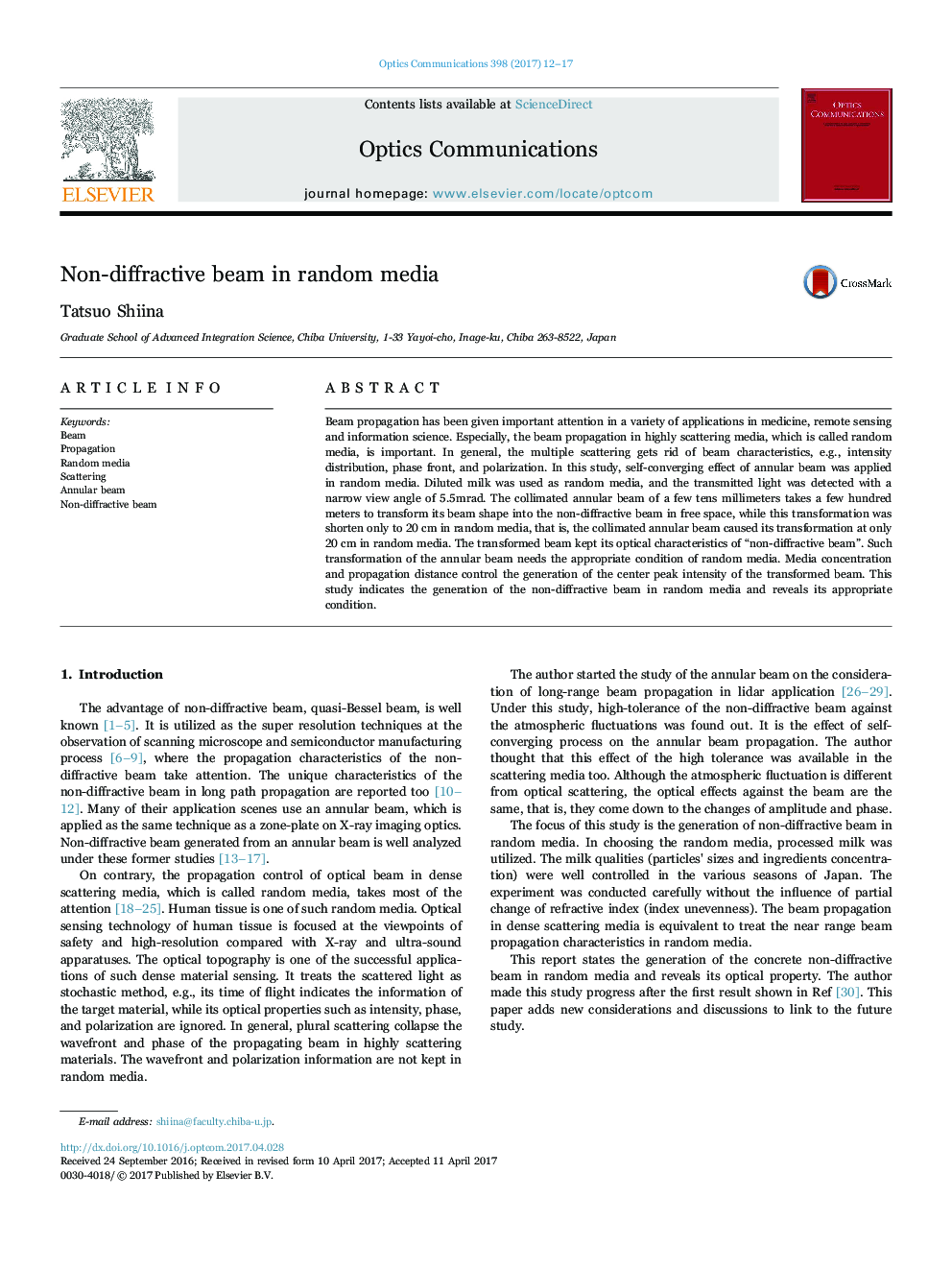| Article ID | Journal | Published Year | Pages | File Type |
|---|---|---|---|---|
| 5449572 | Optics Communications | 2017 | 6 Pages |
Abstract
Beam propagation has been given important attention in a variety of applications in medicine, remote sensing and information science. Especially, the beam propagation in highly scattering media, which is called random media, is important. In general, the multiple scattering gets rid of beam characteristics, e.g., intensity distribution, phase front, and polarization. In this study, self-converging effect of annular beam was applied in random media. Diluted milk was used as random media, and the transmitted light was detected with a narrow view angle of 5.5mrad. The collimated annular beam of a few tens millimeters takes a few hundred meters to transform its beam shape into the non-diffractive beam in free space, while this transformation was shorten only to 20Â cm in random media, that is, the collimated annular beam caused its transformation at only 20Â cm in random media. The transformed beam kept its optical characteristics of “non-diffractive beam”. Such transformation of the annular beam needs the appropriate condition of random media. Media concentration and propagation distance control the generation of the center peak intensity of the transformed beam. This study indicates the generation of the non-diffractive beam in random media and reveals its appropriate condition.
Related Topics
Physical Sciences and Engineering
Materials Science
Electronic, Optical and Magnetic Materials
Authors
Tatsuo Shiina,
